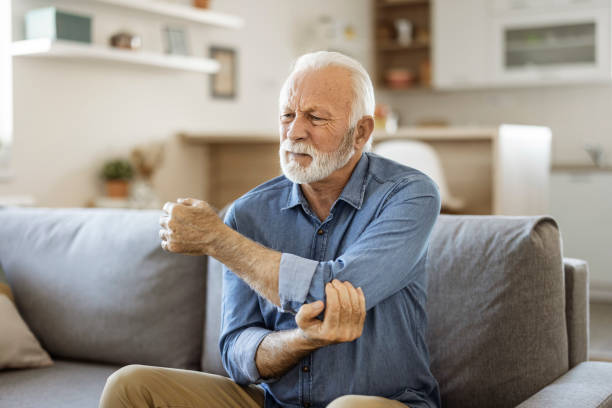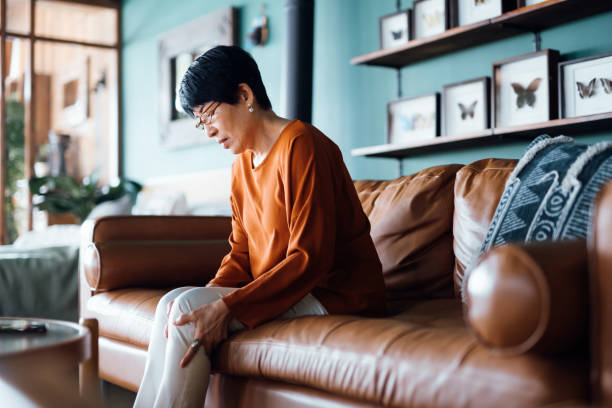As the global population continues to age, it’s becoming increasingly important to understand the health issues that affect seniors. Chronic pain is one of the most common and impactful issues among older individuals. It’s something that affects a significant percentage of people aged 65 and over. Chronic pain can greatly reduce one’s quality of life and is often caused by underlying health conditions or simply the wear and tear of getting older.
In this article, we want to delve into this demographic’s primary sources of pain. We’ll comprehensively examine the causes, severity, and potential management strategies. Our goal is to provide healthcare professionals, caregivers, and seniors with the knowledge they need to manage and alleviate these sources of pain.
Contents
Understanding the Underlying Causes of Chronic Pain in Seniors
Chronic pain among seniors can have various causes, but one of the leading factors is arthritis. It affects a significant number of older adults, causing persistent discomfort in joints like the hands, knees, and hips. Arthritis pain can be debilitating, making it hard to move around and limiting daily activities.
Besides arthritis, seniors commonly experience chronic pain from neuropathy, often related to diabetes or other neurological disorders, or back pain, frequently associated with conditions like osteoporosis or disc diseases. These conditions can cause severe, ongoing pain, affecting not only physical health but also emotional and mental well-being. Understanding these prevalent sources of pain is crucial for developing effective pain management strategies in elderly care.
The Impact of Chronic Pain on Mental Health in the Elderly
Chronic pain goes beyond just being a physical issue — it also profoundly impacts our mental well-being. When older adults experience chronic pain, it can lead to symptoms of depression, anxiety, and trouble sleeping. Dealing with constant pain can make them feel hopeless and down, affecting their mood, energy levels, and overall perspective on life.
And that’s not all – chronic pain can even affect cognitive abilities, making it harder to concentrate or remember things. It’s crucial to recognize this interconnected relationship between chronic pain and mental health so we can provide comprehensive treatment and improve the lives of our elderly population.
Strategies for Managing Chronic Pain in the Elderly

Managing chronic pain in older adults can be complex, requiring a multidimensional approach. The following strategies can be helpful:
- Medication: Over-the-counter analgesics, non-steroidal anti-inflammatory drugs (NSAIDs), and opioids can offer pain relief. However, their use must be carefully monitored due to potential side effects and risks, especially in long-term usage.
- Physical Therapy: Regular physical therapy can help improve mobility and strength, alleviating pain. Therapies can include exercises, electrotherapy, or manual therapy.
- Alternative Therapies: Techniques like acupuncture, massage, and yoga can serve as effective adjuncts to conventional treatment, offering holistic pain relief.
- Psychological Support: Psychotherapy, mindfulness, cognitive behavioral therapy, and support groups can help seniors manage the emotional and mental consequences of chronic pain.
- Lifestyle Changes: Simple changes in daily activities and habits can significantly impact pain levels. This can include maintaining a healthy weight, ensuring a balanced diet, regular gentle exercise, and good sleep hygiene.
- Regular Check-ups: Frequent medical reviews can help monitor the effectiveness of the treatment plan, making necessary adjustments to ensure optimal pain management.
- Patient Education: Empowering elderly individuals with knowledge about their condition and its management can help them make informed decisions about their treatment, enhancing their sense of control over their pain.
Remember, managing chronic pain in the elderly requires a comprehensive, patient-centered approach that considers the individual’s overall health condition, personal preferences, and quality of life.
Future Directions for Research and Treatment
There’s a pressing need for more research on effective methods of managing chronic pain in the elderly. This demographic faces unique challenges, with both physical and mental health playing a role. It’s crucial to explore new approaches to pain management, like telemedicine and wearable devices.
Integrating traditional medicine with holistic therapies could also provide interesting insights. We should also focus on improving accessibility to pain management resources so that all elderly individuals can benefit, regardless of their socio-economic status.
Conclusion
Chronic pain among the elderly is a widespread issue that greatly affects their physical and mental health. As we tackle this challenge, taking a holistic approach to pain management is important. This means considering both traditional and alternative therapies and recognizing how physical discomfort and mental well-being are interconnected. By understanding and addressing the complex nature of chronic pain, we can work towards improving the quality of life for our seniors. Ongoing research and innovative strategies play a crucial role in this endeavor. And as we move forward, let’s keep the focus on accessibility and patient-centered care to ensure that everyone in need benefits from advancements in pain management.
